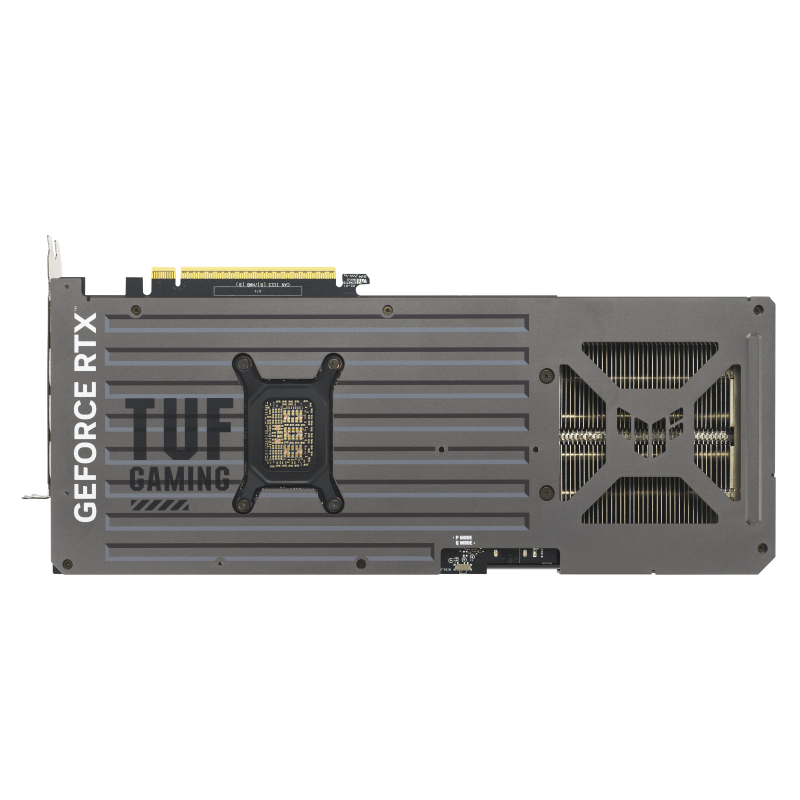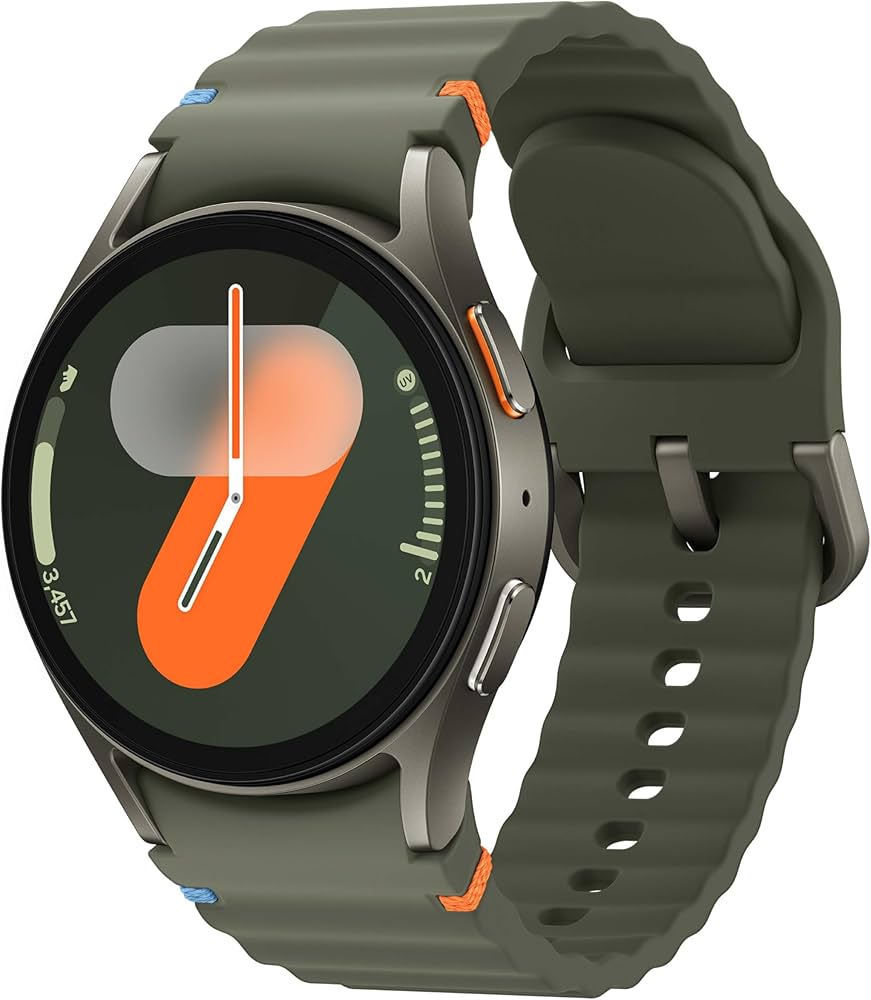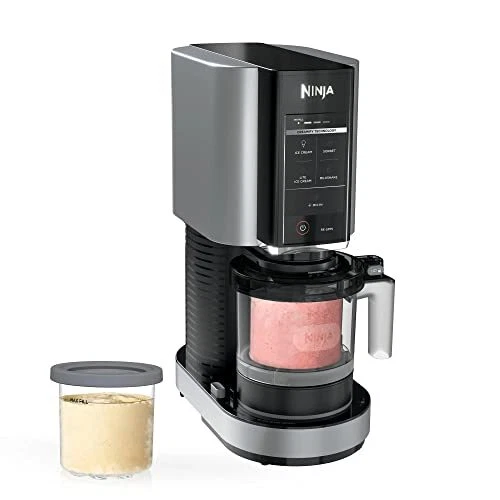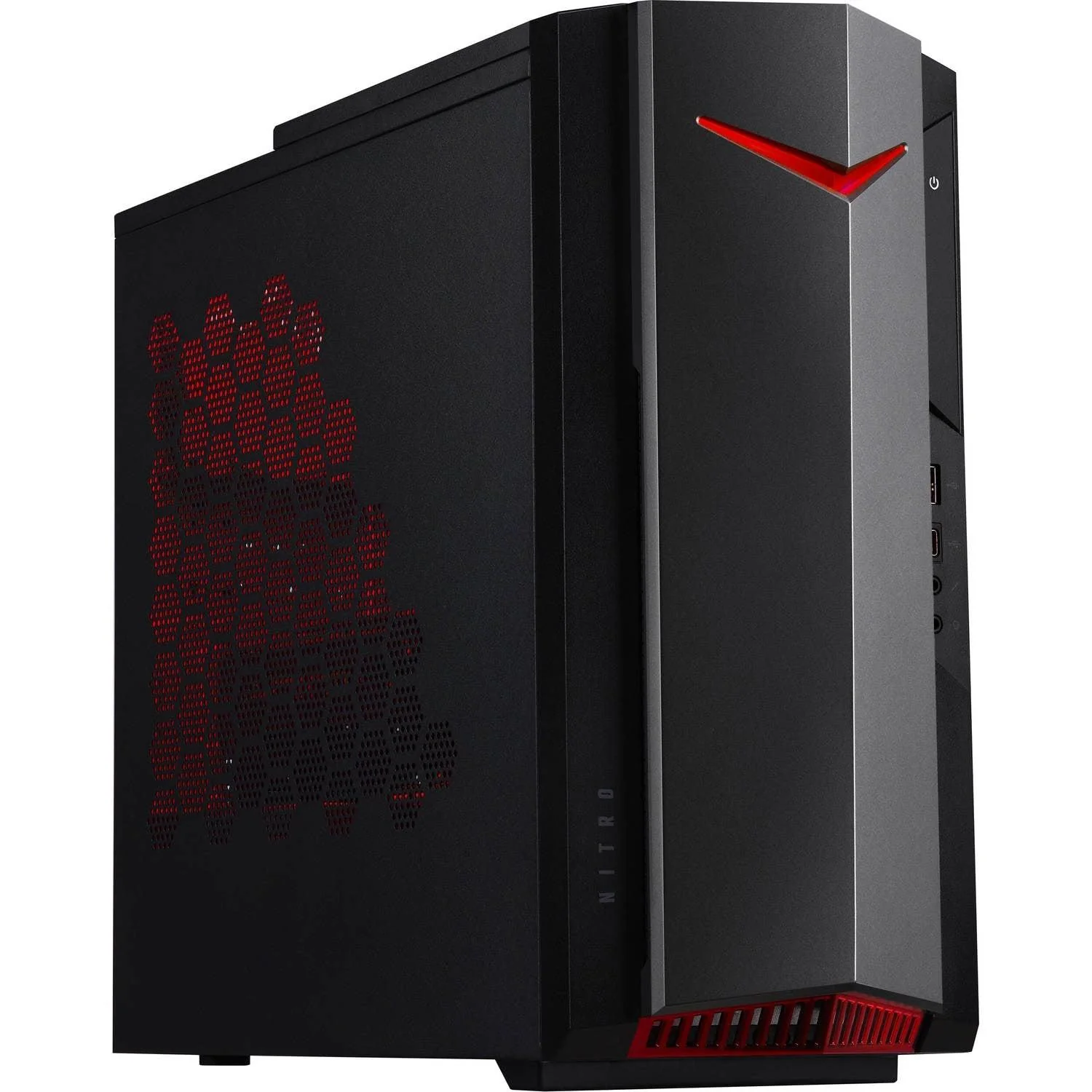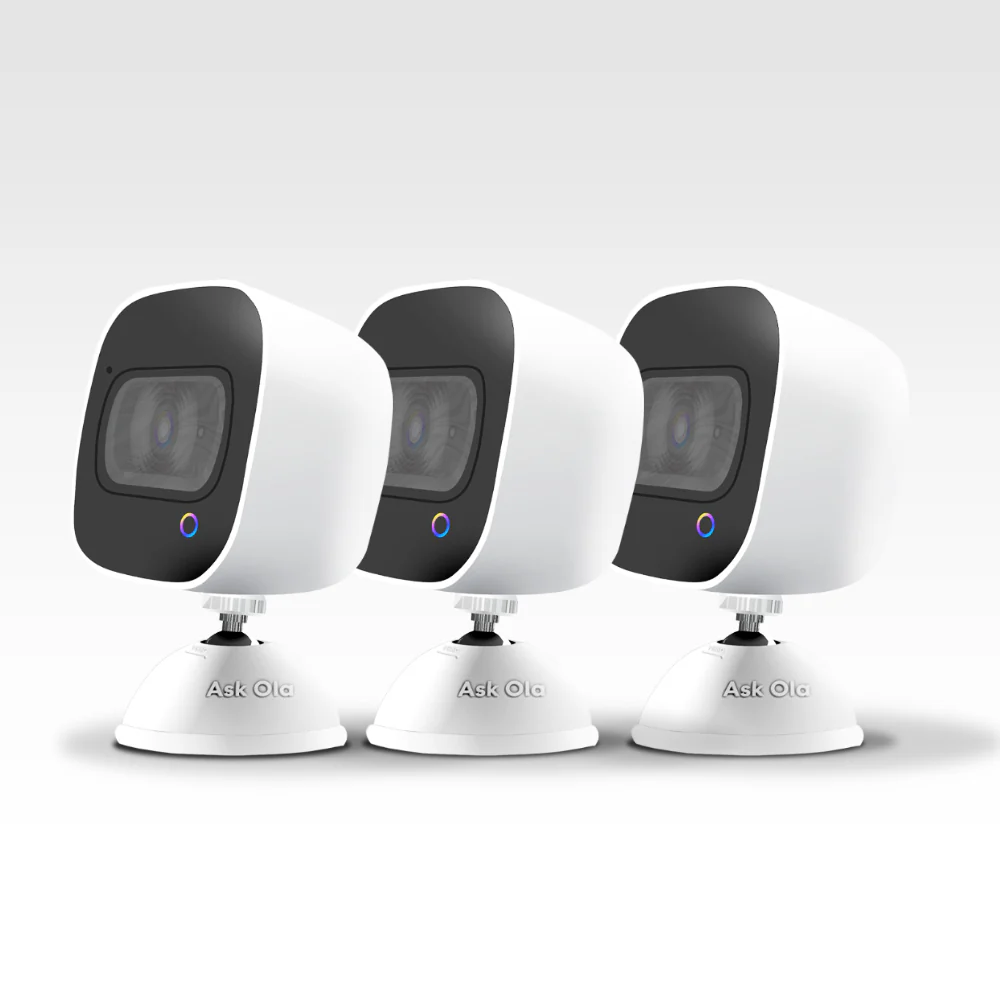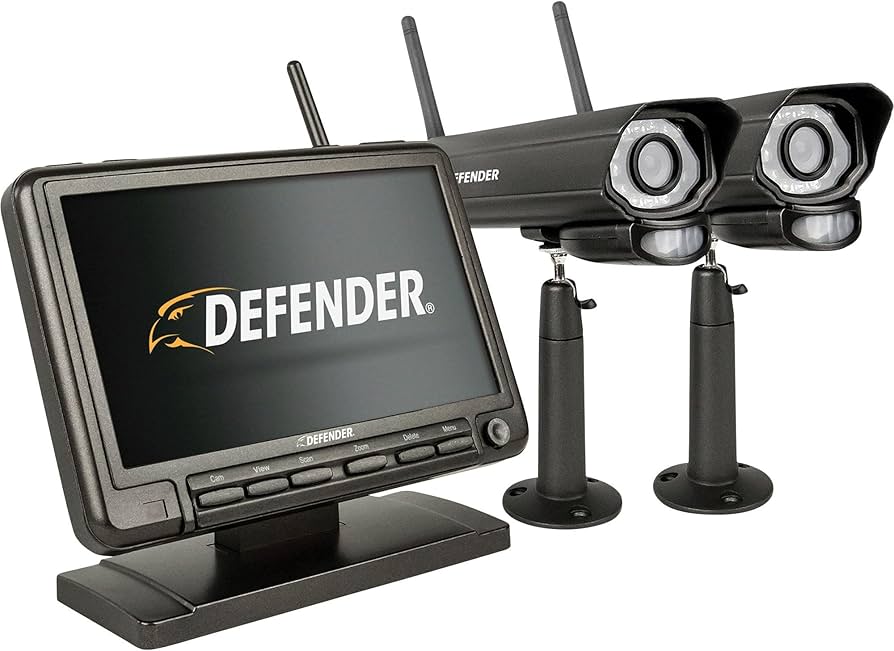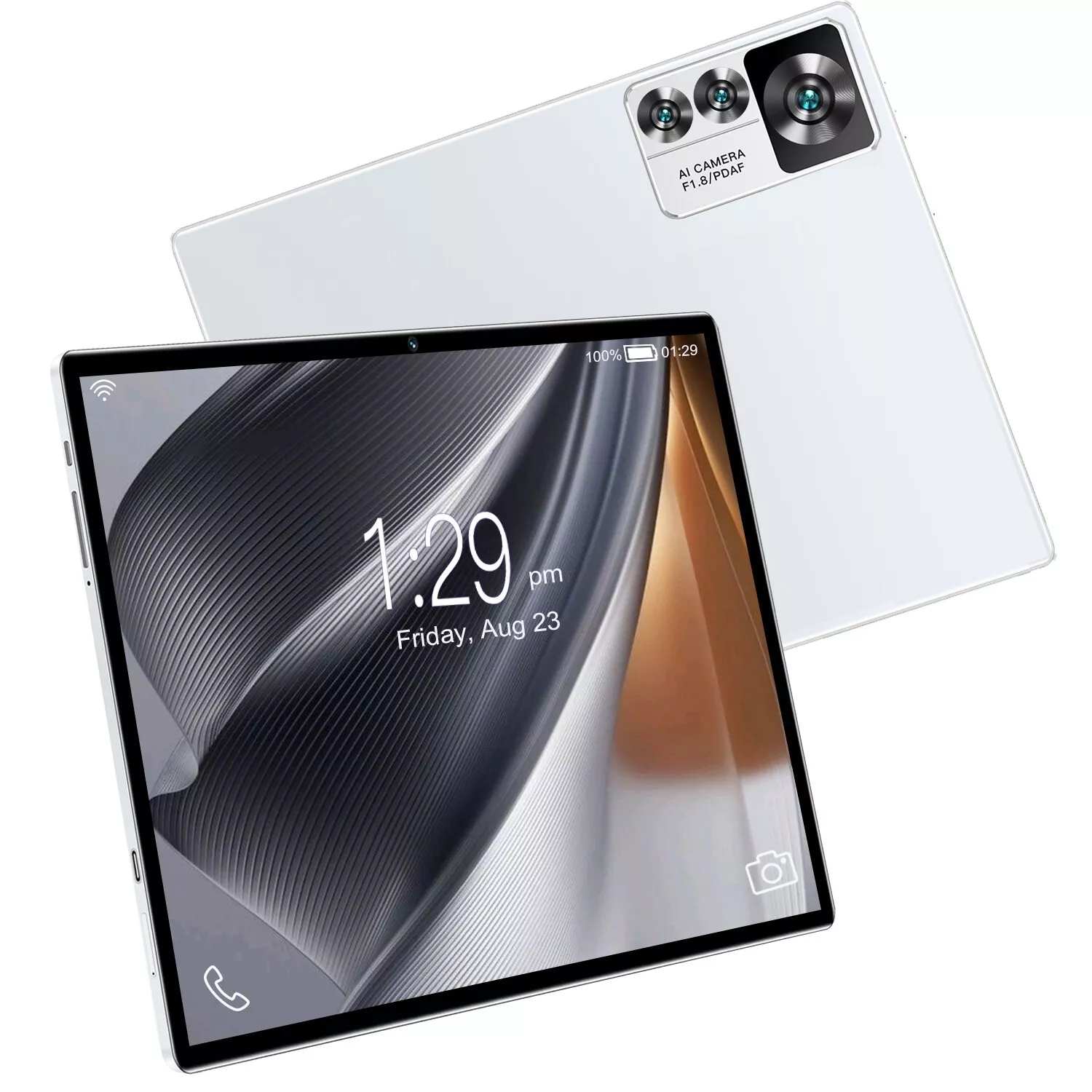The ASUS TUF Gaming GeForce RTX 5070 OC Edition is a powerful new graphics card in NVIDIA’s RTX 50-series lineup, blending next-generation performance with signature TUF durability. With 12GB of ultra-fast GDDR7 memory and the latest NVIDIA Blackwell architecture, this card is built to deliver high frame rates and breathtaking visuals for gamers and creators alike. In this article, we’ll dive into the design, performance, and features of the TUF RTX 5070 OC, discuss who will benefit most from it, and weigh its pros and cons. Let’s explore what makes this GPU a standout in the PC Components category.
Shop ASUS TUF Gaming GeForce RTX 5070 OC 12GB

Built to Last: Premium, Durable Design
ASUS’s TUF (The Ultimate Force) series is known for rugged, long-lasting build quality, and the RTX 5070 OC is no exception. Design-wise, this graphics card has a 3.1-slot thick cooler with a massive fin array and triple Axial-tech fans. The hefty heatsink and three-fan configuration indicate a focus on efficient cooling – crucial for maintaining performance during extended gaming sessions. The fans are optimized for airflow and operate quietly, spinning down at idle (0dB technology) for silent operation when you’re not under load.
The card features a sturdy metal shroud and backplate with TUF’s industrial aesthetic. The backplate not only provides PCB rigidity (preventing card sag) but also has strategic cutouts to vent hot air. ASUS includes a GPU support bracket and their GPU Guard technology, reinforcing the PCB to reduce the risk of cracks or damage from the cooler’s weight or during installation. This means the card is literally “built TUF” to last and endure the rigors of mounting and long-term use.
One notable durability feature is the protective PCB coating. ASUS applied a protective layer over the circuit board to shield against moisture, dust, and debris – an extra guard if you live in humid climates or want the card to have a long service life. Additionally, the TUF RTX 5070 uses military-grade components, such as high-quality capacitors and chokes, in its power delivery. These components are rated for longevity and stable power throughput, contributing to the card’s overall durability and consistent performance under stress.
In terms of size and fit, be aware that this card’s triple-fan cooler makes it quite large. It will occupy over three PCIe slots in thickness and is longer than standard cards. Ensure your PC case has sufficient clearance (both in length and width) and that you have a robust PSU (power supply) to handle it. The card uses the PCIe 5.0 x16 interface for maximum bandwidth and likely requires the new 12VHPWR (16-pin) power connector (typical on RTX 40/50 series), with an adapter provided if your PSU doesn’t have one. The lighting on the card is kept subtle – a small RGB accent with the TUF logo adds a bit of flair but it’s not overly flashy like ROG Strix cards, aligning with the TUF series’ more understated, military-inspired style.
Shop ASUS TUF Gaming GeForce RTX 5070 OC 12GB
Cutting-Edge Performance: NVIDIA Blackwell Architecture
When it comes to raw performance, the ASUS TUF RTX 5070 OC is a high-end contender aimed at 1440p high-refresh-rate gaming and even entry-level 4K gaming. Powered by NVIDIA’s latest Blackwell GPU architecture, it boasts significant generational improvements. The RTX 5070 comes with 6144 CUDA cores for shader processing, which means it can handle complex game graphics and parallel computations with ease. Out of the box, this OC Edition runs at boosted clock speeds up to ~2640 MHz (in OC mode), above the reference specs, giving you a bit of extra frame rate in games without any manual overclocking.
For gamers, this card enables playing modern AAA titles at ultra settings smoothly. At 1440p resolution, you can expect high frame rates well above 100 FPS in many games, making full use of a 144Hz or 165Hz monitor for buttery-smooth visuals. Even at 4K, the RTX 5070 can achieve playable frame rates (60+ FPS) on many titles, especially with the help of DLSS. Speaking of which, one of the flagship features is DLSS 4.0 – NVIDIA’s Deep Learning Super Sampling technology, now in its 4th iteration. DLSS 4.0 uses improved AI algorithms (leveraging the card’s 5th-generation Tensor Cores) to upscale and enhance gaming visuals. You can render games at a lower resolution internally and DLSS 4.0 will smartly upscale it to native-like quality, substantially boosting FPS. DLSS 4 also introduces refined AI frame generation, creating additional intermediate frames for even higher perceived frame rates. The result is that, with DLSS 4.0 enabled, you might play a demanding ray-traced game at 4K and still enjoy very smooth gameplay – a huge plus for this GPU generation.
Ray tracing performance has also advanced. The RTX 5070 features 4th-generation Ray Tracing Cores, hardware units that accelerate realistic lighting, shadows, and reflections. This card can handle ray-traced effects in games better than its predecessors, enabling more titles to run with ray tracing on at decent frame rates. For example, in a game like Cyberpunk 2077 or Fortnite with ray tracing, the RTX 5070 will outperform the previous-gen RTX 4070, delivering higher FPS with these intensive effects active. You can enjoy incredibly lifelike visuals – think accurate reflections in windows or physically correct shadows – without your frame rate tanking, especially when combining ray tracing with DLSS acceleration.
Another aspect of performance is the new GDDR7 memory. The TUF RTX 5070 comes with 12 GB of GDDR7 VRAM on a 192-bit bus. GDDR7 is the next evolution in graphics memory, offering higher bandwidth and efficiency compared to GDDR6 or GDDR6X from the last generation. This high-speed memory means the card can feed data to the GPU cores faster, which improves performance in memory-intensive scenarios (like high resolution textures, or when using the GPU for creative workloads). The generous 12GB capacity provides plenty of room for high-resolution assets and is beneficial for content creation tasks or for future games that may require more VRAM. You’ll be able to mod games with high-res texture packs or do GPU-based video editing and 3D rendering without hitting memory limits easily.
In summary, gaming on the ASUS TUF RTX 5070 OC is a delight: high FPS, support for the latest tech (ray tracing, DLSS 4), and the horsepower to drive both competitive titles (where you want super-high frame rates) and graphically rich games (where you want cinematic visuals). It strikes a great balance for someone wanting near-flagship performance. While the RTX 5090/5080 (if they exist) would be the absolute top, the 5070 offers a sweet spot for high-end gaming without venturing into the extreme price tier of flagship cards.
Shop ASUS TUF Gaming GeForce RTX 5070 OC 12GB
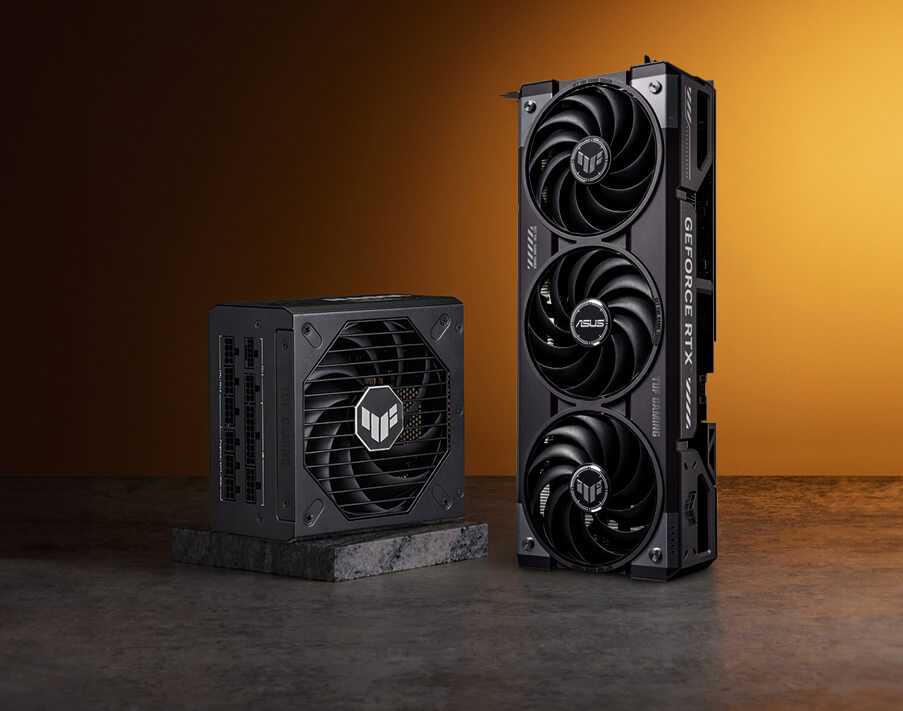
Feature-Rich and User-Friendly
Beyond raw performance, the RTX 5070 OC comes packed with features that enhance the user experience for gamers and professionals:
- NVIDIA Blackwell Architecture: As part of the RTX 50 series, this GPU is built on NVIDIA’s Blackwell architecture, which focuses on improved efficiency and AI capabilities. It’s manufactured on an advanced process node, allowing higher transistor counts and lower power consumption per frame rendered. Blackwell brings architectural improvements like optimized streaming multiprocessors (SMs) that are tuned for better shader execution and new technologies such as Neural Shaders (specialized shader operations accelerated by AI).
- AI and Tensor Cores: This card has dedicated Tensor Cores (5th-gen) that deliver AI horsepower for features like DLSS 4, AI-powered resolution scaling, and even non-gaming applications (AI research, machine learning tasks, etc.). ASUS quotes an “AI Performance” figure of 1000+ Tensor-TOPS, meaning it can handle trillions of AI operations per second. Practically, this enables features like NVIDIA Broadcast (which uses AI to do noise removal on your microphone or background blur on your webcam) and faster training/inference if you dabble in AI development.
- Thermal Innovations: ASUS implemented a unique phase-change thermal pad on the GPU die. Unlike traditional thermal paste, this pad can change phase (melt slightly) at certain temperatures to fill microscopic gaps between the GPU and heatsink, improving thermal contact. This results in better heat transfer and more consistent cooling over time (and it won’t pump out or dry up as some pastes can over years). Along with that, three powerful fans and a huge heatsink keep temperatures in check. During heavy gaming, you can expect the card to stay within safe thermal ranges with relatively low fan noise, thanks to these cooling optimizations. The card also likely features dual BIOS modes (typical for TUF cards) – one Performance mode for the best cooling and one Quiet mode that slightly lowers fan speeds for whisper-quiet operation if you prefer silence over a few extra MHz.
- Connectivity: On the rear I/O, the TUF RTX 5070 OC provides a range of modern display outputs: typically 3 x DisplayPort 2.1 and 2 x HDMI 2.1 ports. This mix is great for multi-monitor setups. DisplayPort 2.1 support means it can handle ultra-high resolutions and refresh rates (ready for future monitors beyond 4K 144Hz), and HDMI 2.1 allows 4K 120Hz with HDR output, perfect for connecting to the latest high-end monitors and TVs (including playing on a big 4K OLED TV at 120Hz). There’s also full support for HDCP 2.3 for protected content and the latest codec decode/encode support (AV1 decode/encode, so you can enjoy streaming 8K video efficiently or capture gameplay with less impact on performance).
- Software and Tuning: ASUS provides their GPU Tweak III software, which is an intuitive utility for monitoring the card and tweaking performance. You can use it to adjust clock speeds, fan curves, or power targets if you want to overclock further or fine-tune for silence. It’s user-friendly for beginners (with one-click OC modes) but also offers advanced controls for enthusiasts. NVIDIA’s own software suite is at your disposal too – GeForce Experience lets you optimize game settings, record gameplay, and keep drivers up to date easily. With GeForce Experience, you also get features like ShadowPlay (for recording/streaming), Ansel (for in-game photography), and Freestyle (for applying filters to games in real-time).
- NVIDIA Studio and Creator Features: If you are a content creator, the RTX 5070 has perks for you. It’s part of the NVIDIA Studio program, meaning it’s optimized for creative applications. The powerful CUDA cores and 12GB of VRAM accelerate tasks in Blender (3D rendering), Adobe Premiere Pro (video editing with GPU-accelerated effects and encoding), Photoshop (AI filters, 3D, etc.), and more. Ray tracing cores can even assist in rendering realistic scenes in supported 3D software (Optix render). This GPU can serve as a workstation card during the day and a gaming card by night, making it versatile for those who do both.
- Resizable BAR and Future-Proofing: The card supports Resizable BAR (Base Address Register), which is a PCIe feature that lets the CPU access the GPU memory more efficiently. This can provide small performance boosts in certain games. Being a PCIe 5.0 card, it is fully future-proof for coming generations of motherboards and systems, although it’s backward compatible with PCIe 4.0 and 3.0 (running at those interface speeds if installed in an older system). Essentially, you can drop this card into a new build years down the line and still harness its full x16 bandwidth.
All these features mean the ASUS TUF RTX 5070 is not just about high frame rates – it’s also about a feature-rich experience that caters to a wide range of uses, from competitive gaming to creative work, streaming, and beyond.
Shop ASUS TUF Gaming GeForce RTX 5070 OC 12GB
Ideal for Diverse High-Performance Needs
The ASUS TUF Gaming GeForce RTX 5070 OC is an excellent choice for several types of users, thanks to its blend of power and durability:
- Enthusiast Gamers @ 1440p or 4K: If you are a gamer with a high-refresh 1440p monitor (e.g., 144Hz or 240Hz at 2560×1440), this card is squarely aimed at you. It will let you push very high settings in games and still maintain the high frame rates to fully utilize your monitor. Even if you game at 4K resolution, this GPU offers a great entry point to 4K gaming without dropping to low settings – you might use DLSS to upscale from 1440p to 4K internally, getting sharp graphics and smooth performance. It’s for the gamer who wants near-top-tier performance but doesn’t quite need (or want to pay for) the absolute flagship like an RTX 5090.
- Competitive eSports Players: Interestingly, while eSports titles (like CS:GO, Valorant, Fortnite, etc.) aren’t as demanding, pairing them with a powerful GPU like the RTX 5070 ensures you get super-high frame rates for 240Hz or even 360Hz gaming monitors. If you compete or take your competitive gaming seriously, the low latency and high fps output of this card (plus support for NVIDIA Reflex to reduce system latency) can give you an edge. The card’s sturdy build also means it’s reliable for LAN events or frequent transport if you carry your PC around.
- Content Creators and Streamers: For streamers, the RTX 5070 offers the ability to game and encode your stream on the same machine effectively. NVIDIA’s latest NVENC encoder on the 50-series provides excellent quality live stream encoding with minimal performance loss, so you can stream to Twitch or YouTube in high quality while playing. Content creators who do video editing, 3D modeling, or graphic design will appreciate the 12GB VRAM and the acceleration in creative apps. The TUF durability aspects (cooler, fans) also mean it can run long rendering sessions or encodes without overheating or throttling – great for production reliability.
- PC Builders Who Prioritize Longevity: If you’re building a PC and want components that last, the TUF series is designed with longevity in mind. This card is for the user who maybe doesn’t upgrade GPUs every generation – you want this 5070 to serve you well for many years. With its protective features (coatings, robust components), it’s a card you can feel confident about for the long haul. It’s also a good pick for those who run their machines 24/7 or for long hours (perhaps for distributed computing projects or just heavy daily usage) because it’s engineered to withstand that kind of stress.
- Noise and Cooling Conscious Users: Thanks to the efficient cooling design, this GPU is suitable for those who want strong performance without a jet-engine PC. If you care about noise levels, the TUF’s large heatsink means the fans don’t have to spin as fast to dissipate heat. So, gamers who play in the same room where others might be (or streamers with a mic on their desk) will appreciate the quieter operation. The dual BIOS option to use a Quiet mode is great for balancing acoustics to your liking.
On the other hand, who might not need this card? If you primarily game at 1080p on a 60Hz monitor, the RTX 5070 is arguably overkill – you could get by with a lower-tier card and still have smooth gameplay. Likewise, if you are on a tight budget or if your case cannot fit a large GPU, you may have to consider a smaller or more budget-friendly alternative. But for most enthusiasts with the budget to invest in a high-quality GPU, the TUF RTX 5070 OC will be deeply satisfying and relatively future-proof.
Shop ASUS TUF Gaming GeForce RTX 5070 OC 12GB
Pros and Cons: Thorough Evaluation
Pros:
- Excellent Performance: Capable of high-refresh-rate 1440p and solid 4K gaming, with DLSS 4.0 providing an extra performance boost when needed. It handles modern games and ray tracing with ease.
- Durable, Quality Build: TUF military-grade components, reinforced structure, and protective PCB coating translate to a long lifespan and reliability, ideal for heavy use.
- Advanced Cooling: Triple-fan, thick heatsink design with phase-change thermal pad keeps temperatures low and performance consistent, all while operating quietly.
- Feature-Rich: Supports the latest technologies (Blackwell architecture, ray tracing cores, Tensor cores for AI, AV1 encoding, PCIe 5.0, HDMI 2.1/DP 2.1). Great software support (GPU Tweak III, GeForce Experience) and extras like dual BIOS and RGB lighting add value.
- Ample VRAM: 12GB of fast GDDR7 memory provides headroom for high-resolution textures, future games, and multi-monitor setups. It’s also beneficial for creative applications and multitasking.
Cons:
- Large Size: The massive cooler makes this card bulky. It will require a spacious case and may block additional slots on your motherboard. Small form factor builds likely cannot accommodate it.
- High Power Demand: While more efficient than past generations, it’s still a powerful card that can draw significant wattage under load. Users need a quality power supply (likely ~750W or higher recommended) and the new power connector.
- Premium Price: Being a high-end RTX 50-series GPU with extra durability features, it comes at a premium cost. It might not fit everyone’s budget, especially if you don’t need the extra ruggedness.
- Potential Overkill for Some: For purely casual gamers or those at lower resolutions, the extra performance may go untapped. In such cases, a lower-tier (and cheaper) GPU could be more appropriate.
- Limited Availability at Launch: As with many new-gen GPUs, initial stock might be limited. Early buyers could face shortages or higher prices until supply stabilizes.
Shop ASUS TUF Gaming GeForce RTX 5070 OC 12GB

Conclusion
The ASUS TUF Gaming GeForce RTX 5070 OC 12GB graphics card combines top-tier gaming performance, innovative features, and unparalleled durability into a compelling package. While its premium cost and substantial size may deter budget-conscious or space-limited users, it excels in delivering stable, high-quality visuals for demanding gamers and creators. With advanced cooling, versatile software support, and future-proof connectivity, this GPU represents an excellent investment for those who demand reliability, longevity, and superior graphical performance. The TUF RTX 5070 OC is not just a GPU upgrade—it’s a cornerstone component for any high-performance gaming or professional workstation.
Choose the ASUS TUF RTX 5070 OC for outstanding gaming and creative power, paired with unmatched durability and long-term performance.
Shop ASUS TUF Gaming GeForce RTX 5070 OC 12GB
FAQ
- Does the ASUS TUF RTX 5070 support dual BIOS modes?
Yes. It features a dual BIOS switch on the card. By default, one BIOS is a Performance mode (maximizing cooling and performance) and the other is a Quiet mode (lower fan speeds for silent operation). This allows you to choose a profile that suits your preference without needing any software. - What power connectors does the RTX 5070 OC use, and what PSU is recommended?
The RTX 5070 OC uses the 16-pin PCIe 5.0 12VHPWR power connector (also known from the RTX 40-series). ASUS typically includes an adapter in the box that converts 2x or 3x 8-pin PCIe connectors to this 16-pin if your power supply doesn’t have one. It’s recommended to have at least a 750W high-quality PSU for a system with this card, to ensure stable power delivery, especially if paired with a high-end CPU. The card has robust power management, but providing clean and adequate power is important for optimal performance. - How does the RTX 5070 compare to the previous generation (RTX 4070)?
The RTX 5070 is a generational step up. In general, you can expect roughly 20–30% better performance (varies by game) compared to an RTX 4070. It also brings new features like DLSS 4.0 (versus DLSS 3 on 4070) and improved ray tracing efficiency. Additionally, the 5070’s Blackwell architecture offers better energy efficiency, so performance-per-watt is improved. If you’re upgrading from an RTX 3070 or older, the jump is even more significant, with the 5070 being multiple times faster in many scenarios and adding features those older cards lack. - Is 12GB VRAM enough for future games at 4K?
For the majority of current games, 12GB of VRAM is plenty, even at 4K resolution with high settings. It covers popular titles and workflows comfortably. There are a few recent games that can use more than 12GB at ultra 4K settings (with extreme texture packs), but those are the exception and often still run fine with slight tweaks. NVIDIA likely balanced this card for 1440p/4K gaming where 12GB is sufficient. If your focus is strictly 4K ultra gaming or heavy content creation with very high-resolution assets, you might consider an RTX 5080/5090 class with more VRAM. However, for mixed usage and forward-looking mainstream gaming, 12GB should serve well for years to come. - What kind of cooling setup is recommended in my PC case for this GPU?
The RTX 5070 OC will expel a fair amount of heat into the case due to its high performance. It’s recommended to have a case with good airflow. At minimum, ensure you have intake fans bringing cool air in (preferably at least two front intakes) and exhaust fans (one or two, typically one at rear and one on top) to expel hot air. The card’s fans push heat out the sides and through the back vents of the card. A well-ventilated case will prevent heat buildup and allow the GPU’s cooler to work optimally, maintaining high boost clocks. If you already have a decent mid-tower or full-tower case with a few fans, you should be in good shape – just double-check that the length of the card (check ASUS specs, but expect around 12.5 inches / 320mm or more) fits in your case. - Can I use the ASUS TUF RTX 5070 for multi-monitor or VR setups?
Absolutely. The card’s variety of outputs (HDMI 2.1 and DP 2.1) support multi-monitor configurations with high resolutions. You could, for example, run a triple-monitor setup for simulation racing or flight sims, and the 12GB VRAM helps with the large combined resolution. For VR (Virtual Reality), the RTX 5070 is a very capable card. It meets and exceeds the requirements for high-end VR headsets, ensuring you get smooth performance in VR games and applications. The powerful GPU cores and DLSS can also help maintain the high frame rates VR demands (typically 90 FPS per eye or more), which is important to avoid motion sickness.

